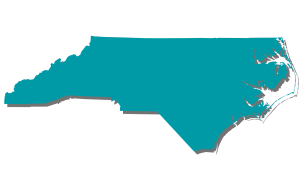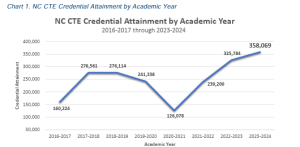To continuously improve college and career pathways systems, data systems must be connected across silos, bridging K-12, higher education, and workforce data including learner outcomes, employer feedback, and program data.
These readily available metrics identified across education systems, workforce, and economic development agencies allow leaders to use these metrics to support both real-time and long-term decisions.
Over the past two years of collaboration, leaders and participants in the Launch initiative learned a great deal about the conditions that must be in place to advance high-quality, equitable, and sustainable pathways systems. The conditions are related to a framework of five levers that are critical for driving lasting systems change: policy, funding, partnerships, data, and equity.
This fourth blog in the series elevates four state-level examples featured in Conditions For Sustainable and Equitable Pathways Systems of how state CTE leaders are leveraging data to build college and career pathways for scale and sustainability.
Tennessee
The Tennessee Board of Regents (TBR) partnered with the Tennessee Department of Labor and Workforce Development to launch a new Careers Start Here dashboard that shows trends in employment for graduates of the state’s community and technical colleges. The dashboard aims to arm users with accessible data to inform decision-making. It allows TBR colleges, including Tennessee Colleges of Applied Technology, to deepen their understanding of employment patterns and wage outcomes for their learners. Colleges can track outcomes for graduates and nongraduates of TBR colleges between 2013 and 2023 and examine employment in Tennessee, average wages, and industry trends. The dashboard is meant to be user-friendly and enables users to explore the data based on region of residence, award type, industry, career cluster, program of study, race/ethnicity, gender, year of exit, and graduation status. All data can be disaggregated by learner demographics, and the data are updated quarterly.
 Virginia
Virginia
The Virginia Office of Education Economics (VOEE), created by legislation and established in 2021, informs policy and practice at the intersection of education and workforce development. VOEE data and analyses inform a diverse group of stakeholders as they make data-driven decisions for programs and policy related to workforce education and training, leveraging economic, labor market, and learner-level data. These stakeholders include the governor and members of the General Assembly, who look to VOEE as a guide as they make strategic investments in current and future education and workforce training programs. The office works closely with key partners across the state, including the Virginia Department of Labor, the Virginia Secretary of Commerce & Trade, the State Council of Higher Education for Virginia, the Virginia Community College System, higher education institutions, the Virginia Department of Education, the Virginia Employment Commission, GO Virginia, the Virginia Board of Workforce Development, and other workforce partners.
North Carolina
North Carolina has made the attainment of industry-recognized credentials for high school graduates a statewide priority, with a focus on ensuring that learners earn true credentials of value. However, despite supportive policy and investments, the state identified that many more learners could and should be earning credentials, or what the state is calling their “credential potential.” This concept aims to close the gap between the number of learners eligible to earn a credential and those who do, using data to drive equitable outcomes.
The state’s Board of Education and Department of Public Instruction deliver an annual Credential Report to the North Carolina General Assembly. The report analyzes data in many robust ways, including credential tier, equity and access, and trends over time. CTE learners achieved a 41% credential attainment rate for the 2022–23 school year, a substantial increase from 28% in 2021–22. Additionally, there was a 44% increase in attainment of credentials that align with the North Carolina Workforce Credentials partners list created in partnership with employers and workforce development organizations. North Carolina will develop a CTE dashboard to assist district and school leaders with data analysis to identify gaps and missed opportunities to credential learners, particularly for those who are from underrepresented populations.
Kentucky
KYSTATS is a state office housed within the Kentucky Education and Workforce Development Cabinet. It is tasked with collecting and linking learner-level data across the commonwealth in an integrated data system to evaluate education and workforce programs. This work includes developing reports and data dashboards, responding to research requests, and providing statistical analysis to help policymakers, practitioners, and the general public make data-informed decisions. Tools such as the Kentucky CTE Employer Connector help employers and educators find the CTE programs closest to them. Reports such as the CTE Feedback Report examine high school CTE trends and their association with employment and postsecondary outcomes later in life. They also display training locations and future demand for employment. The 2023–25 Research Agenda focuses on expanding data usage to inform policy, programs, and equity in the evolving commonwealth.
Dive into additional state examples and the conditions that enable accessible and sustainable high-quality pathways systems at scale across the five levers of policy, funding, partnerships, data, and equity in the first publication from the Launch initiative Conditions For Sustainable and Equitable Pathways Systems.


 Virginia
Virginia


